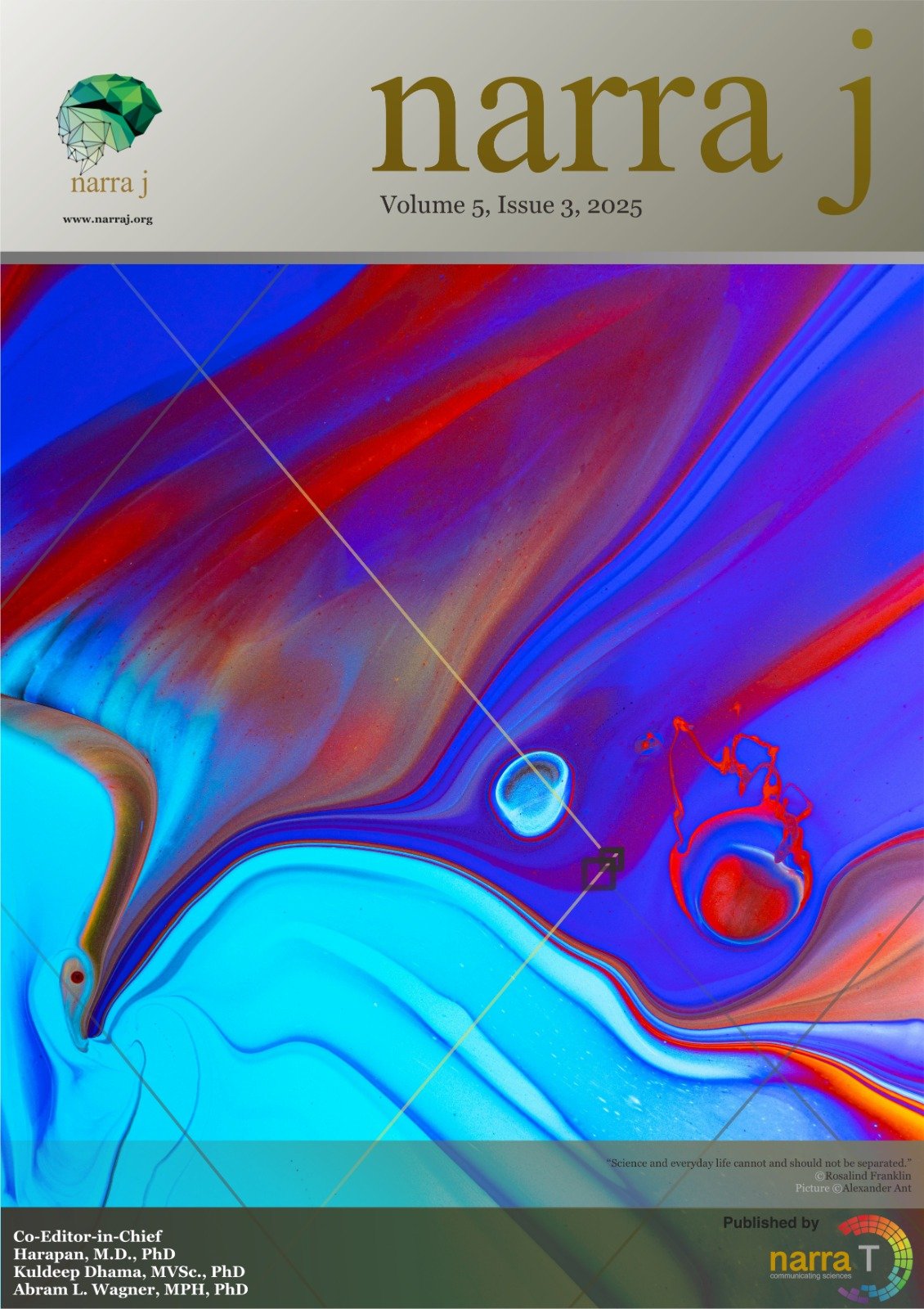Navigating the intersection of COVID-19 and lower extremity acute limb ischemia: A retrospective cohort study of clinical characteristics and outcomes at Dr. Cipto Mangunkusumo Hospital
DOI:
https://doi.org/10.52225/narra.v5i3.2557Keywords:
Acute limb ischemia, COVID-19, revascularization, vascular surgery, fluoroscopic guidanceAbstract
Acute limb ischemia (ALI), a critical condition threatening limb viability and patient survival, has demonstrated an increased incidence during the COVID-19 pandemic, primarily due to virus-associated thrombotic complications. The pandemic has also led to delays in the diagnosis and treatment of non-COVID conditions, including ALI. The aim of this study was to evaluate the clinical characteristics and outcomes of ALI patients treated at Dr. Cipto Mangunkusumo Hospital between 2018 and 2022, comparing outcomes before and during the COVID-19 pandemic. Patients were categorized into two cohorts: pre-pandemic (n=28) and pandemic (n=53), with March 2020 marking the onset of the pandemic period. Treatment outcomes—revascularization success, re-intervention, and mortality—were assessed using multivariate logistic regression. Among the 81 patients, 34.6% were treated before the pandemic and 65.4% during the pandemic. Revascularization success was significantly higher during the pandemic (relative risk (RR): 2.46; 95% confidence interval (CI): 1.16–5.24; p=0.013), whereas no significant differences were observed in re-intervention or mortality rates (both with p>0.05). A prior history of COVID-19 was not significantly associated with revascularization outcome (p=0.933). The use of fluoroscopic guidance was significantly associated with improved revascularization success (RR: 36.58; 95%CI: 6.54–204.6; p=0.001). Rutherford classification was a significant predictor of re-intervention success (p=0.022), while the presence of dyslipidemia and cardiovascular disease were independently associated with mortality (RR: 0.08–0.76, p=0.0o5, and RR: 2.24–25.18, p=0.001, respectively). In conclusion, fluoroscopy appears to enhance revascularization outcomes in the treatment of ALI. Comorbidities such cardiovascular disease, and COVID-19 history should be taken into account when managing patients with ALI.
Downloads
Downloads
How to Cite
Issue
Section
Citations
License
Copyright (c) 2025 Akhmadu Muradi, Ihza Fachriza, Dedy Pratama, Raden Suhartono, Hanafiah Harunarashid

This work is licensed under a Creative Commons Attribution-NonCommercial 4.0 International License.



